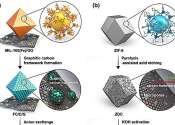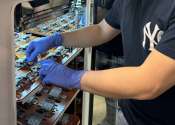Million-mile battery unveiled by ground-breaking research
Elon Musk promised—and Jeff Dahn delivered. With the publishing of a ground-breaking paper in the Journal of The Electrochemical Society (JES), Dahn announced to the world that Tesla may soon have a battery that makes their ...
Sep 27, 2019
16
8938









